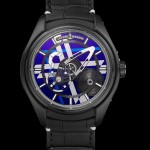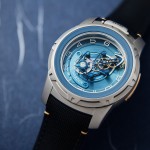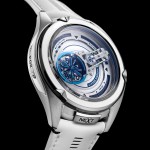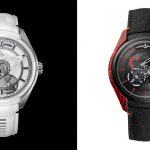Up Close: Ulysse Nardin Freak X Silicium Marquetry
The art of silicon, literally.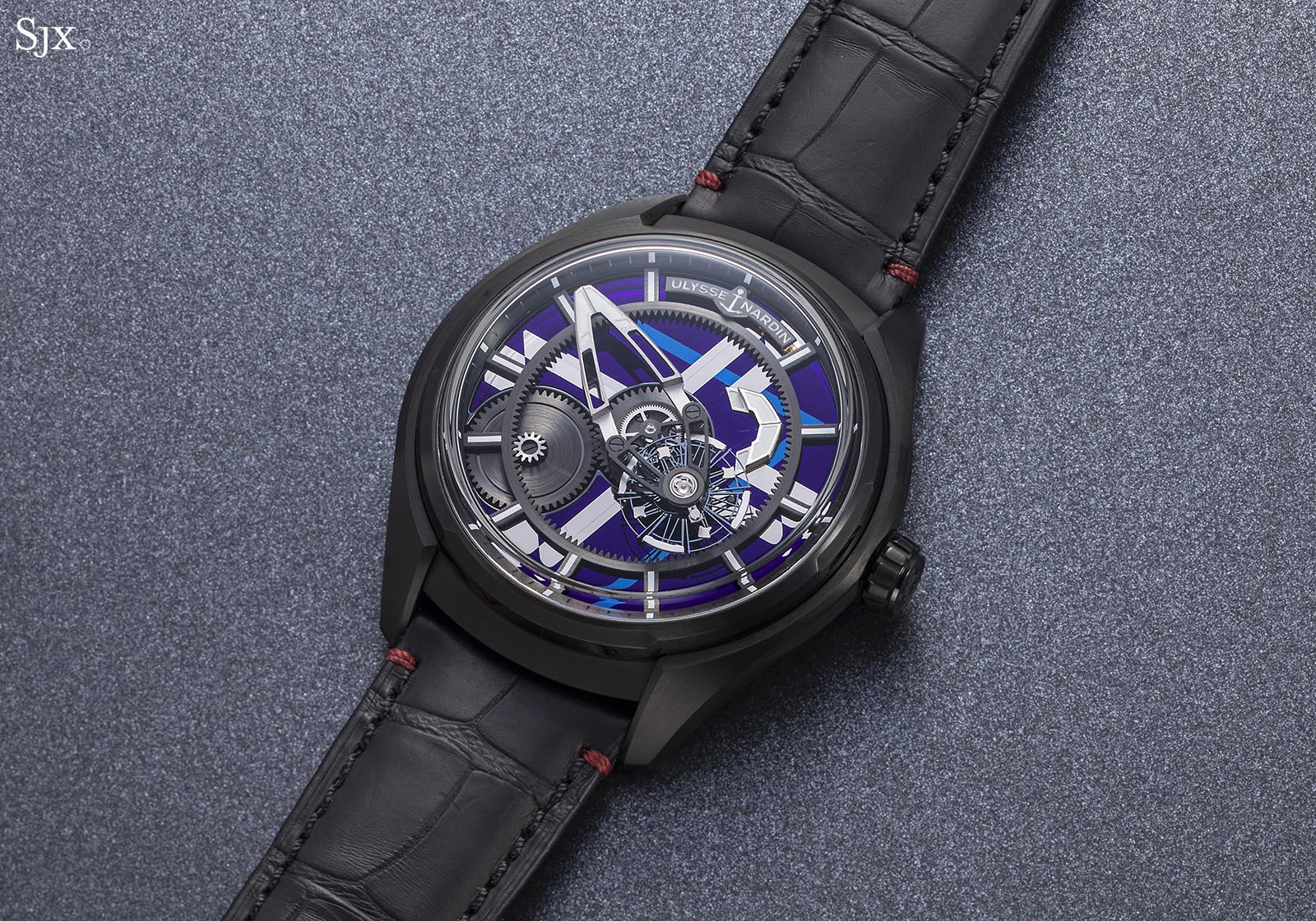
Revolutionary for its construction and use of silicon, the Ulysse Nardin Freak is still a unique watch almost two decades after its introduction. And the full-featured Freak is still a relatively costly watch, until the Freak X came along last year. The most affordable version of a watch that helped kickstart the age of high-tech mechanical watchmaking, the Freak X retains the essence of its bigger brother while simplifying the rest of the movement.
Several iterations of the Freak X have been rolled out since then, including one that ironically takes silicon out of the movement – the Freak X Silicium Marquetry. The watch has a dial decorated with inlaid tiles of iridescent silicon, using the material for its aesthetic potential, rather than the usual functional purposes in the escapement.
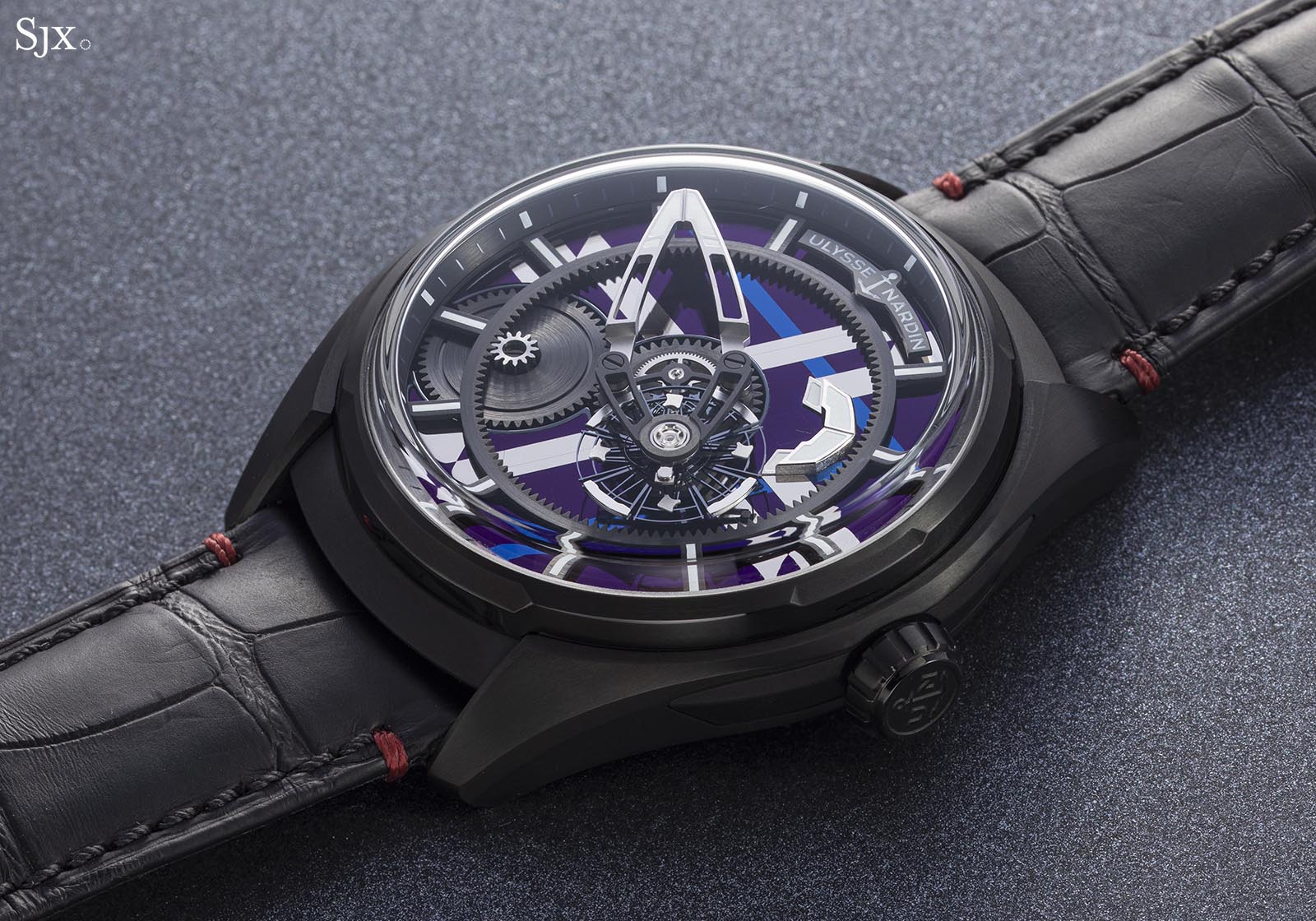
The Freak X Silicium Marquetry
Initial thoughts
The Freak X Silicium Marquetry is an aesthetic variant of the standard model, so it’s identical in all respects except the dial finish. A combination of metallic and glassy, the silicon dial is different from any other dial material and suits the look of the watch well.
That means the case is compact, so it wears quite well. And more importantly, the watch has a cutting-edge balance wheel amounted on the minute hand, making one revolution an hour. It’s a surprisingly advanced regulator in a watch at this price point, and probably the most advanced of all watches in the price segment.
But the Freak X Silicium Marquetry is substantially more expensive than the standard Freak X, priced at US$8,500 over the base model. Even though the dial material is exotic, the premium feels a bit more than it should be. While the standard Freak X is a value proposition, the Silicium Marquetry edition isn’t quite as good value.
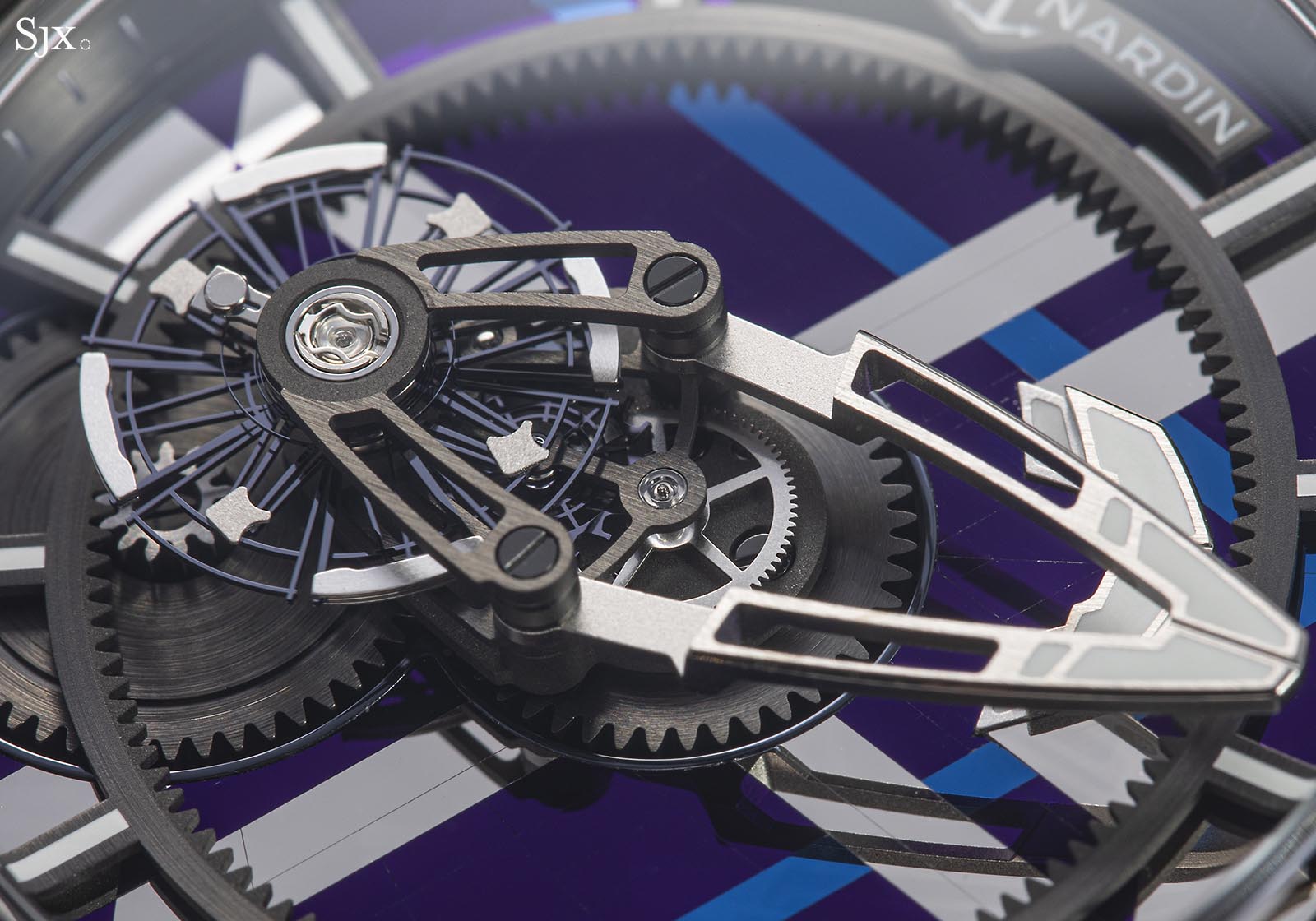
Silicon-oxide art
What distinguishes the Freak X Silicium Marquetry is the spectacular metallic dial made of silicon, a first for Ulysse Nardin. The dial is tiled with 120 slices of silicon, assembled by hand on the brass dial base, creating to an avant-garde mosaic.
While both versions of the Freak X Silicium Marquetry have the same oversized “X” on the dial, the natural-finish titanium model has it in gold-on-blue, while the black-coated version has a dial that’s silver-on-purple.

Wafers of silicon assembled by hand. Photo – Ulysse Nardin

The finished dial of the black-coated model. Photo – Ulysse Nardin
While silicon components in watchmaking are typically blue or violet, the material’s natural colour, they can be produced in a variety of colours by varying the production process. The colour is dependent on the amount of silicon oxide deposition on the surface, which can be tweaked when the silicon wafer is being “grown”.
Pure silicon undergoes thermal oxidation to achieve a low friction coefficient as well as greater stability when subject to temperature variations. A layer of silicon dioxide is formed on the surface that reflects different wavelengths according to its thickness, achieving different colours.

The twin versions of the Freak X Silicium Marquetry. Photo – Ulysse Nardin
But the silicon oxide layer on the surface also changes the physical properties of the components, so certain colours can compromise the functional qualities of the silicon part. Achieving the right ratio of oxide-layer to silicon is key in attaining the characteristics that are desirable for watch movement components, usually the escapement parts and hairspring.

When used to decorate the dial, however, the functional properties of silicon don’t matter as much, allowing for artistic freedom. The dial is thus characterised by a beautiful, highly-reflective lustre that offers a striking contrast against the intricate mechanics of the balance assembly, especially in the version with the all-black case.
The only downside of the silicon inlay is the nature the material means it is a challenge to cut into small pieces – the topic is widely discussed – and as a result, the edges of the silicon pieces that form the dial are irregular when viewed up close. It’s not visible on the wrist, or even with the naked eye, but when examined very close the edges show.
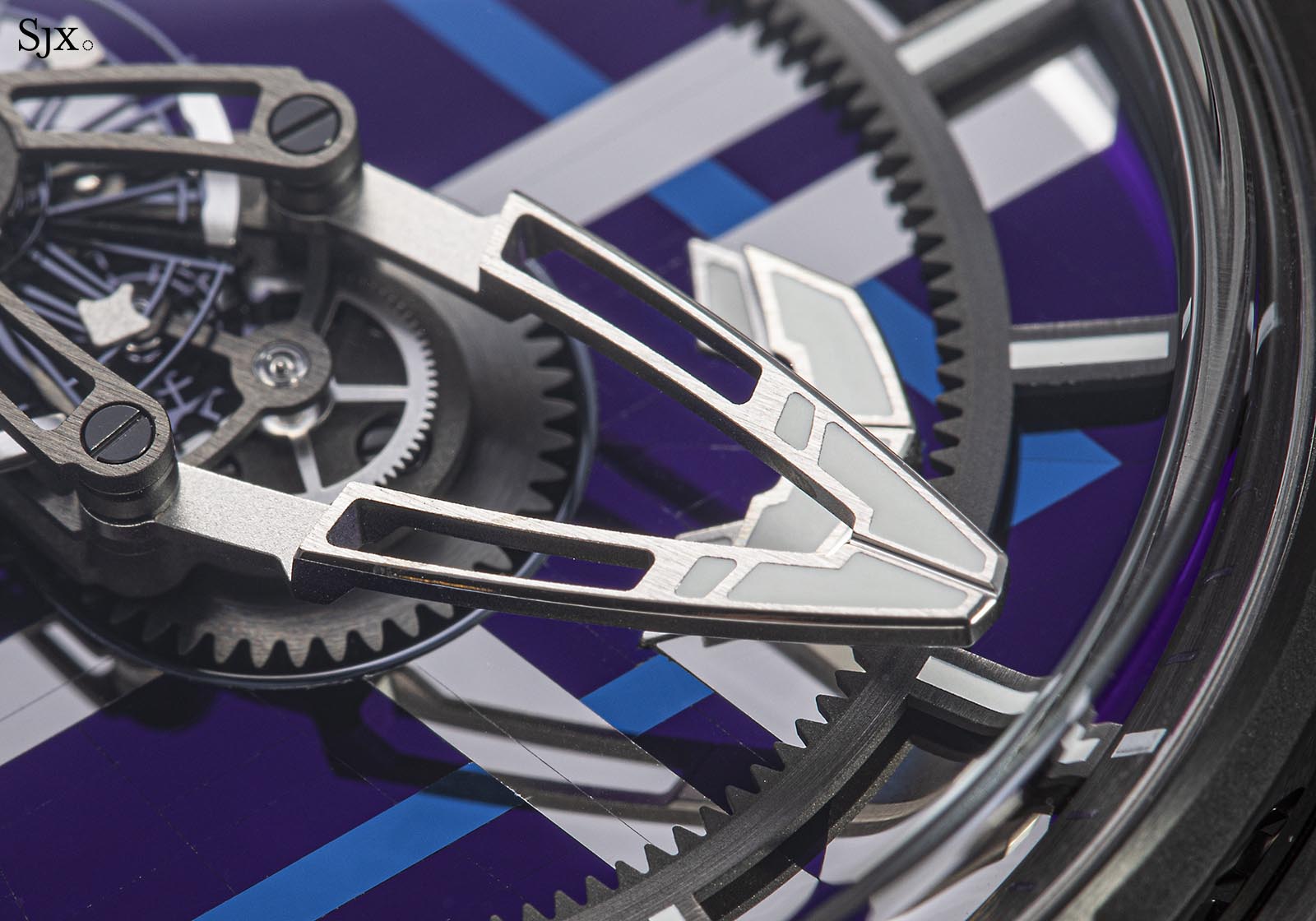
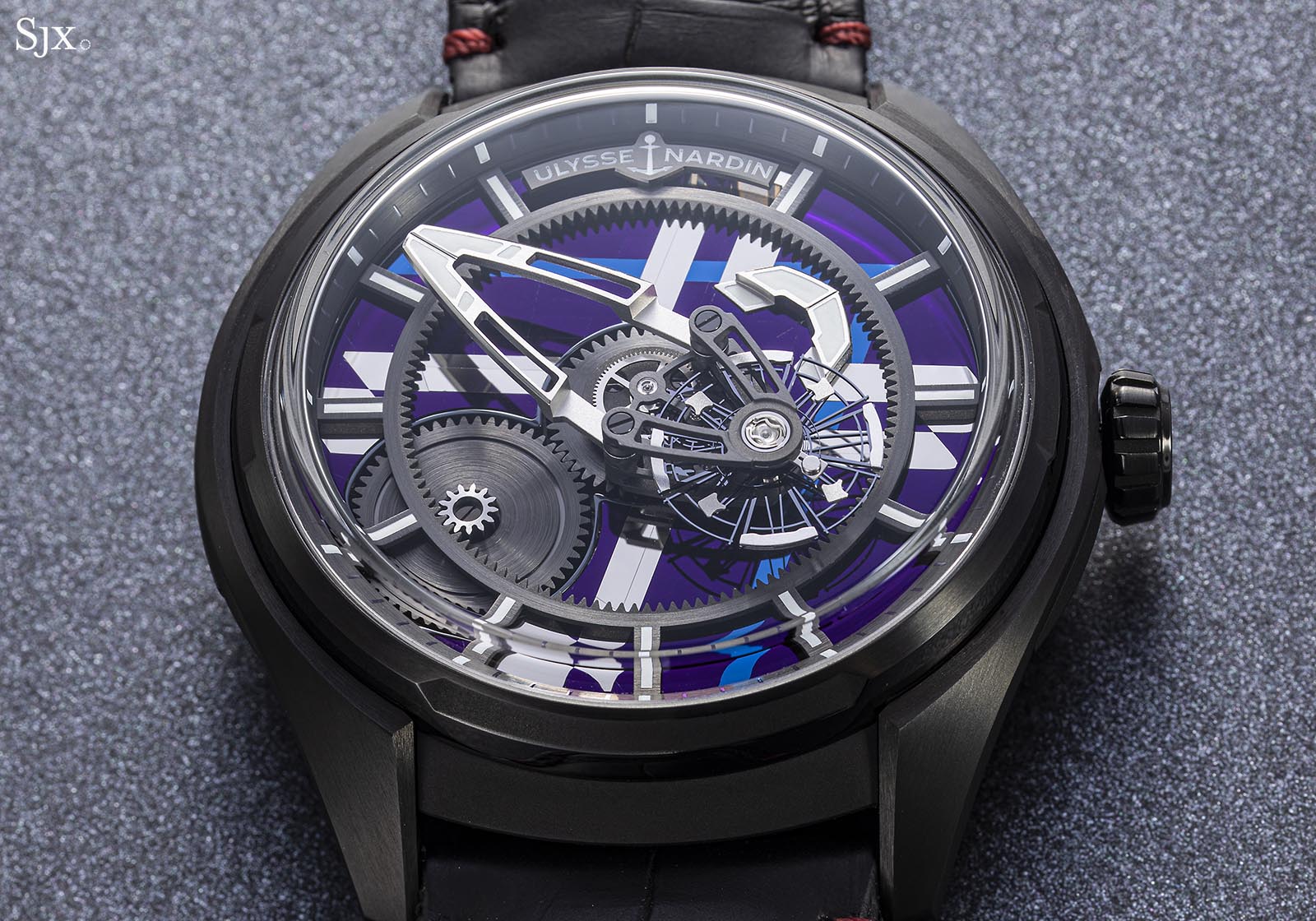
Reimagined and streamlined
Conceived by Carole Forestier-Kasapi and perfected by Ludwig Oechslin, the original Freak was named after the radical architecture of the movement. Visible on the dial are two large annular gears for the hours and minutes respectively, enabling the entire movement to rotate in the watch, with the enormous mainspring sitting below the dial.
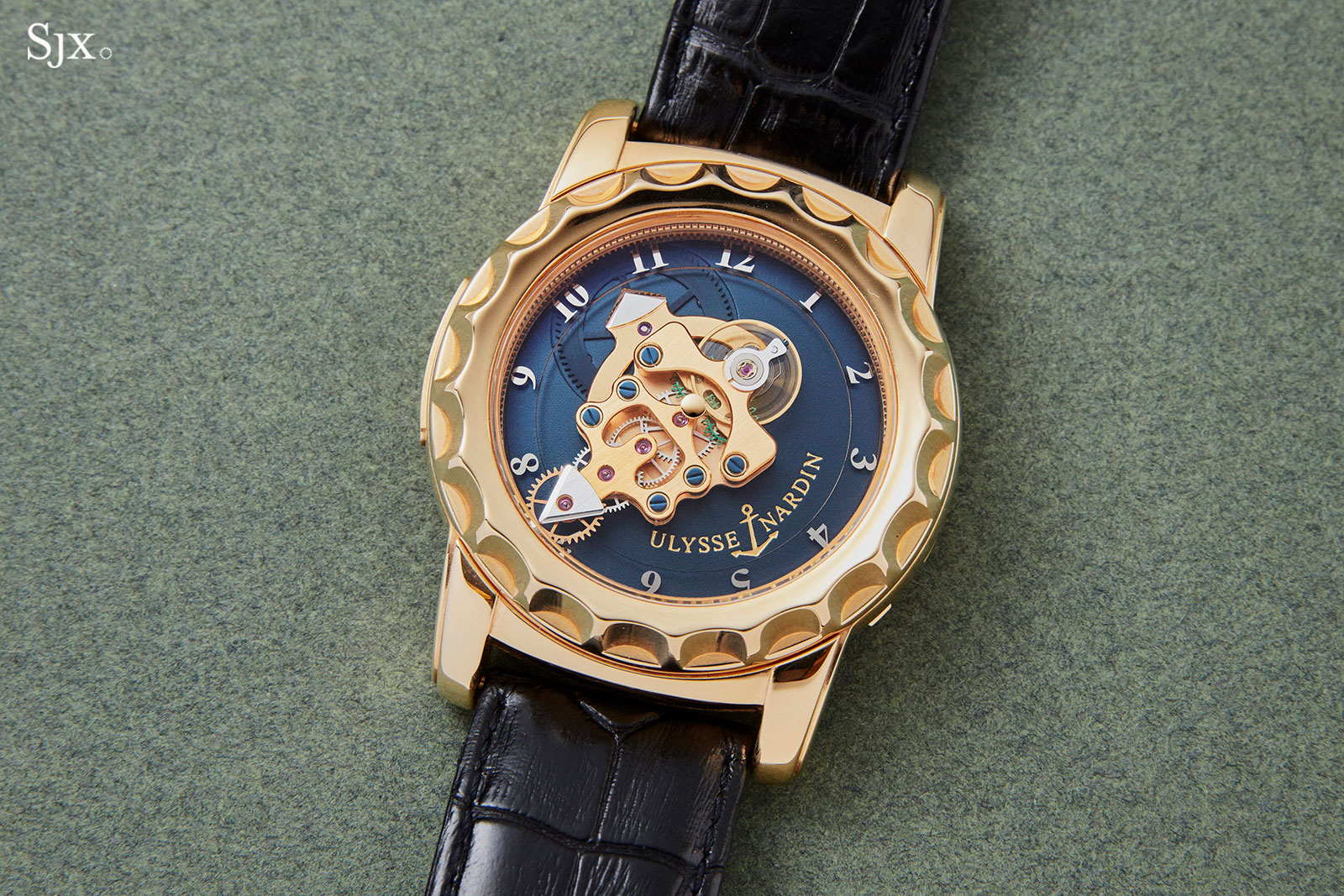
The original Freak
A large hour wheel mounted directly on top of the dial (which is also the cover for the barrel) travels along the first annular gear, making one revolution every 12 hours, and in turn drives the central pinion.
The central pinion holds the minute hand, which is made up of the gear train, escapement and balance wheel. Positioned on the tip of the minute hand, the first wheel travels along a second gear ring, making one rotation every hour.
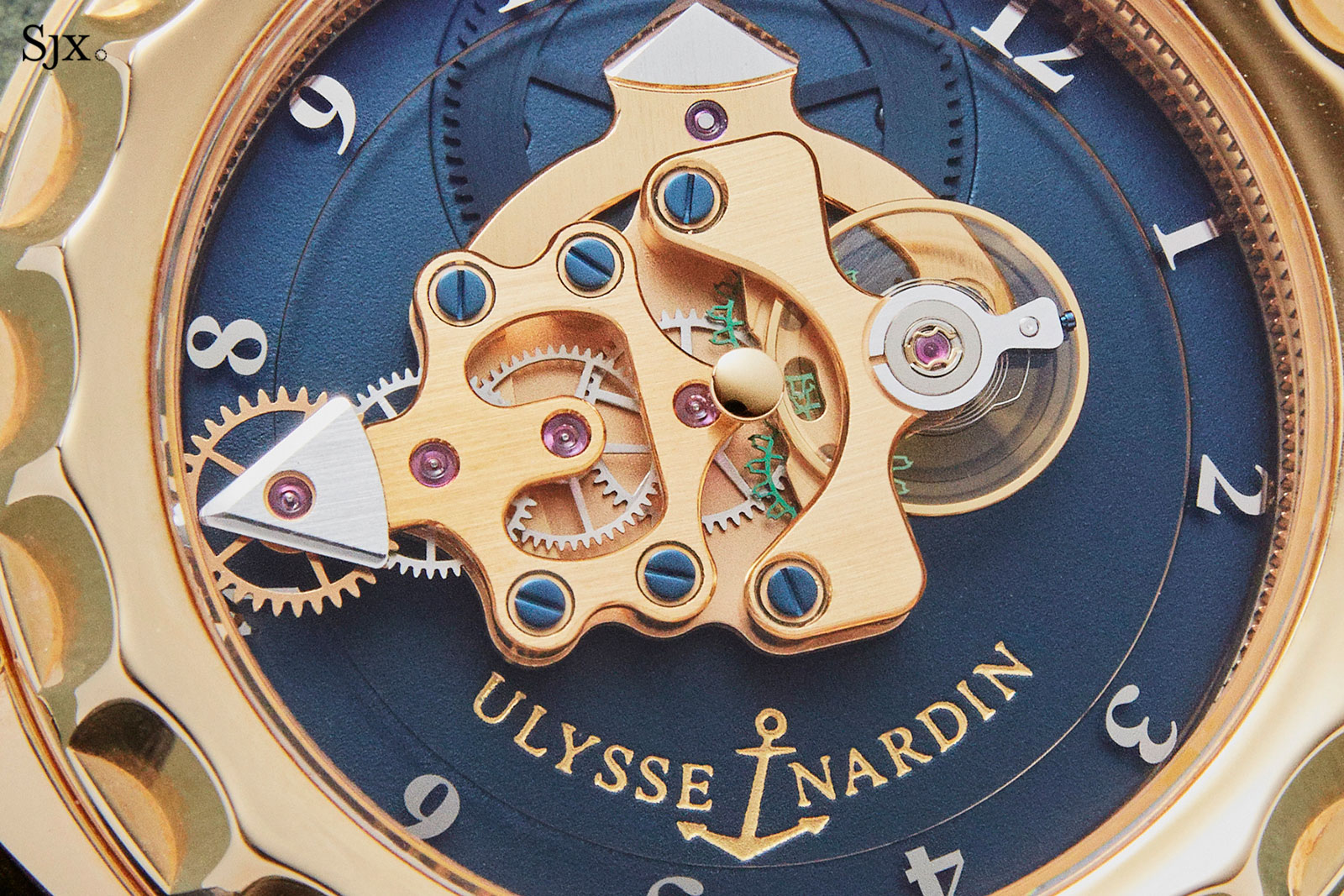
Seen here with the second-generation Dual Direct escapement
Unsurprisingly, powering the time display requires a huge mainspring that occupies almost the entire interior of the case, and was enough for a week’s worth of power reserve. In fact, the mainspring is so large that practically the entire movement is visible on the dial.
The complexity of construction means the Freak, in its original form and every iteration since then, was never a truly affordable watch. But the ingenious construction had potential for economy if it was pared back, which is what was done with the Freak X.
But the Freak X is not a simplification of the original Freak. Instead it achieves economy with a dramatically different construction – presumably to avoid jeopardising the appeal of the original – while offering the convenience of automatic winding.
In the Freak X, the time display is actually a module mounted on top of a conventional automatic movement. The display module consists of a planetary gear system, made up of a large, fixed gear ring, a planet gear for the hour hand, and a centrally-positioned gear for the minute hand.
But importantly, the escapement and balance wheel are part of the minute hand, and rotate around the dial once an hour – this is what makes the watch a Freak. The rest of the movement, however, is largely conventional, making it arguably more robust.
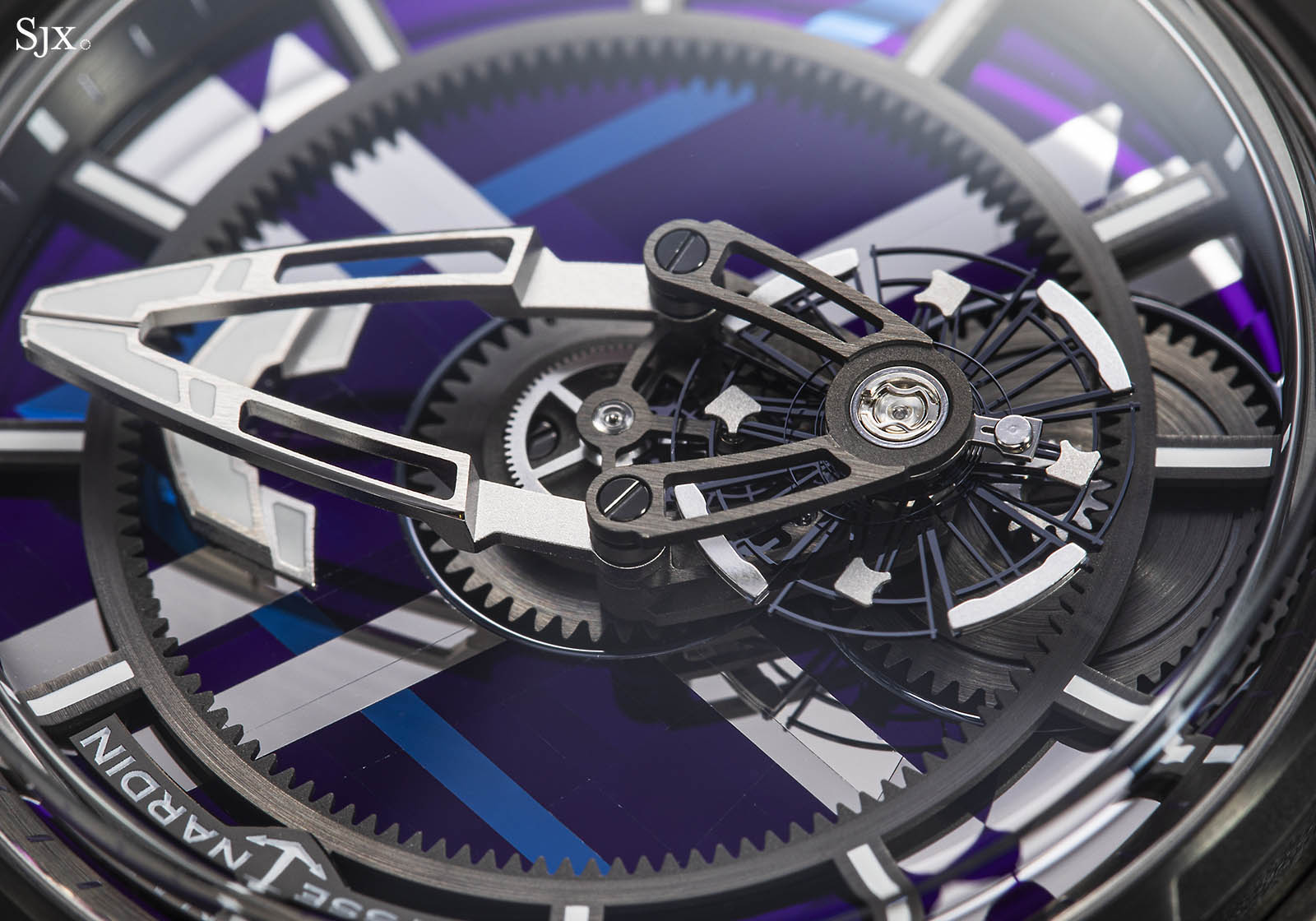
The display module driven by a planetary gear mechanism visible under the balance wheel
The second major departure from the original Freak is the use of a conventional lever escapement as opposed to the Dual Direct escapement, which is still found on the high-end Freak models. However, the lever escapement is made of silicon, which means the all-important escape wheel operates in a virtually frictionless manner, with almost no energy loss.
Most notably, the Freak X uses a high-tech, free-sprung balance wheel made of silicon, a feature absent in other Freak models. The silicon balance wheel is the crucial element that gives the Freak X its exotic-mechanical look.
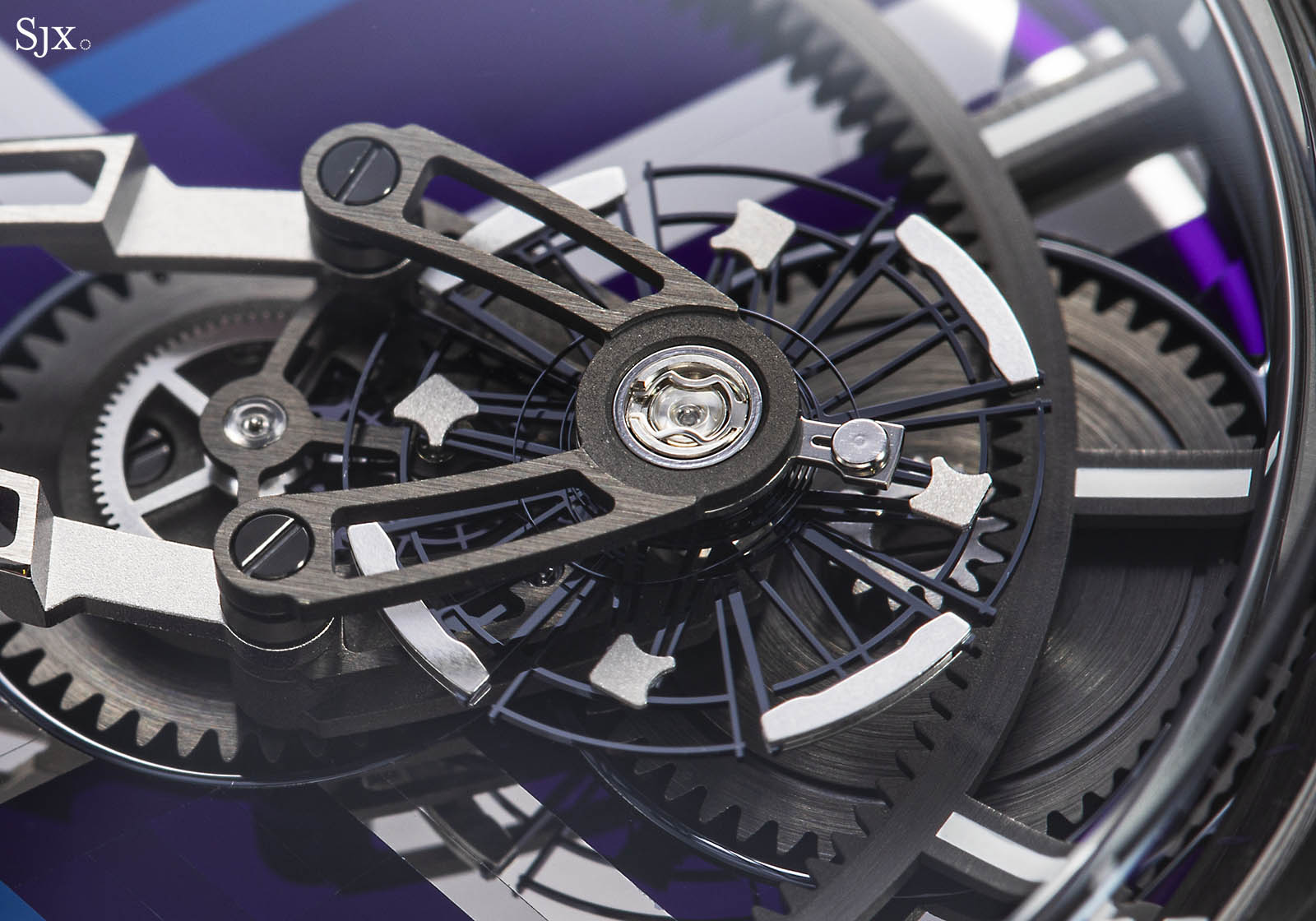
Escapement, balance and hairspring – all in silicon
The lightness of silicon allows the balance wheel to be large, while having nickel weights on its rim to optimise inertia. A light and large balance wheel, however, is encounters greater air resistance when it oscillates. As such, the balance wheel incorporates “micro-blades” into its structure, which exploit air resistance to stabilise its amplitude.
Practical proportions
Compared to the traditional Freak case, the Freak X has a simpler, more rounded case that features short, gently tapered lugs. And it is also smaller in diameter, making it more wearable.
The Silicium Marquetry edition is identical in shape and feel, measuring 43 mm and 13.35 mm high, available in either natural-finish or black-coated titanium.
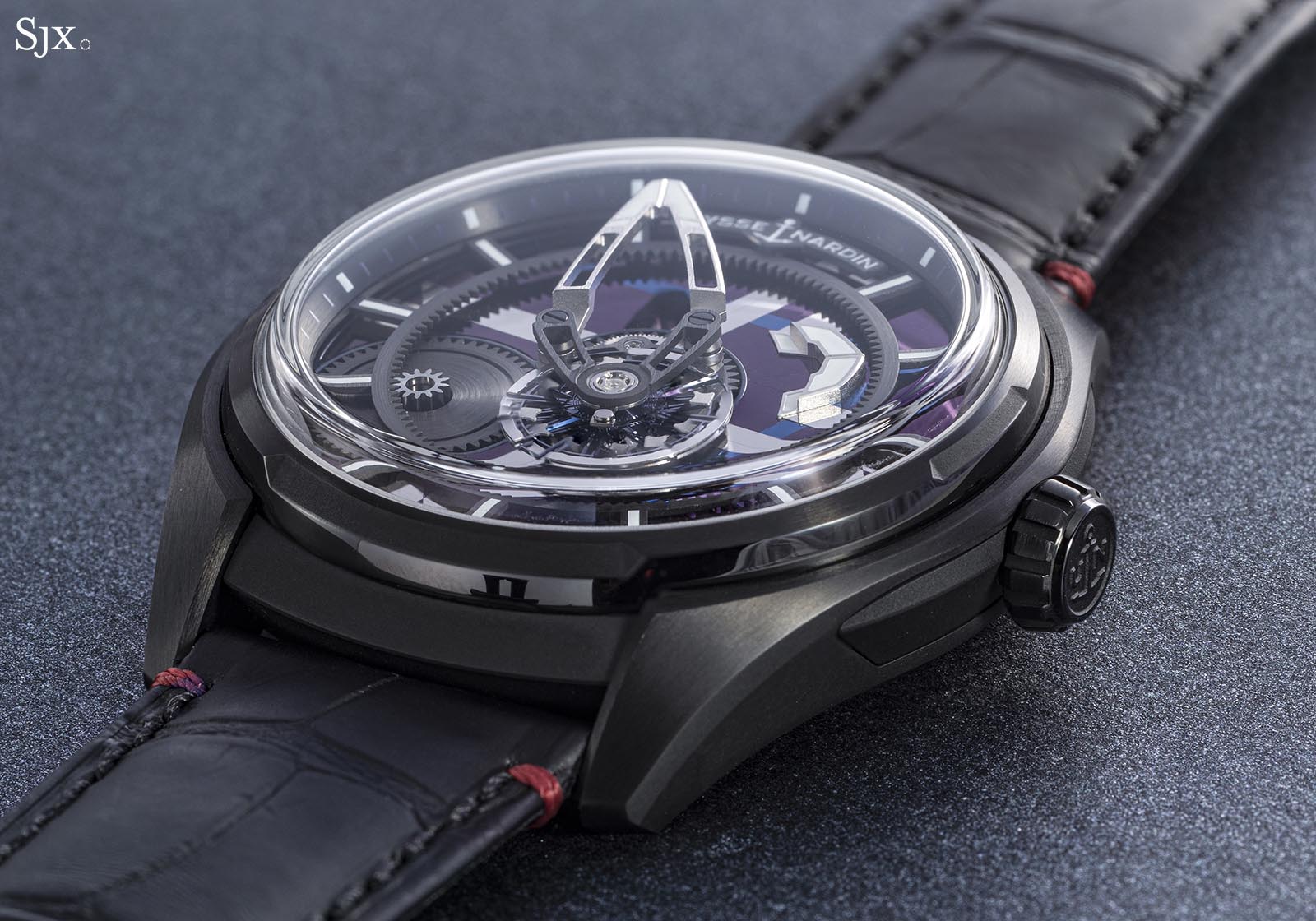
That said, the case is approximately 1.3 mm thicker than earlier Freaks due to the automatic movement. But the self-winding movement also allows it to do away with the characteristic time-setting bezel and case-back winding mechanism of the original Freak, making the Freak X a more conventional and practical watch with a crown at three.
Though the case is fairly ordinary in design, it does a mix of surface finishes, though the dark case colours mean the texture isn’t very apparent. The bezel is finished three ways with brushed, polished and sandblasted surfaces, while the lugs are brushed while the case band is sandblasted.
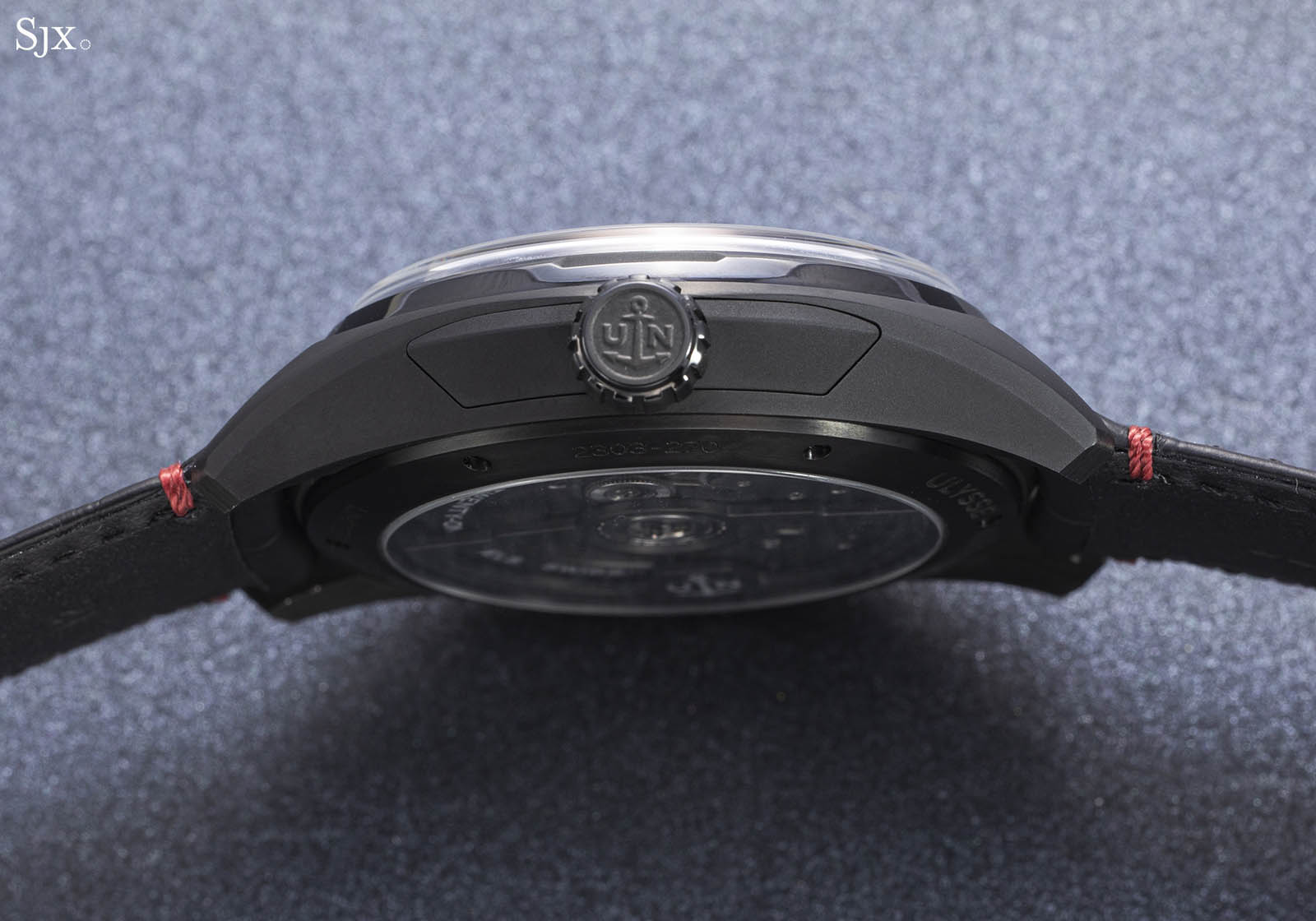
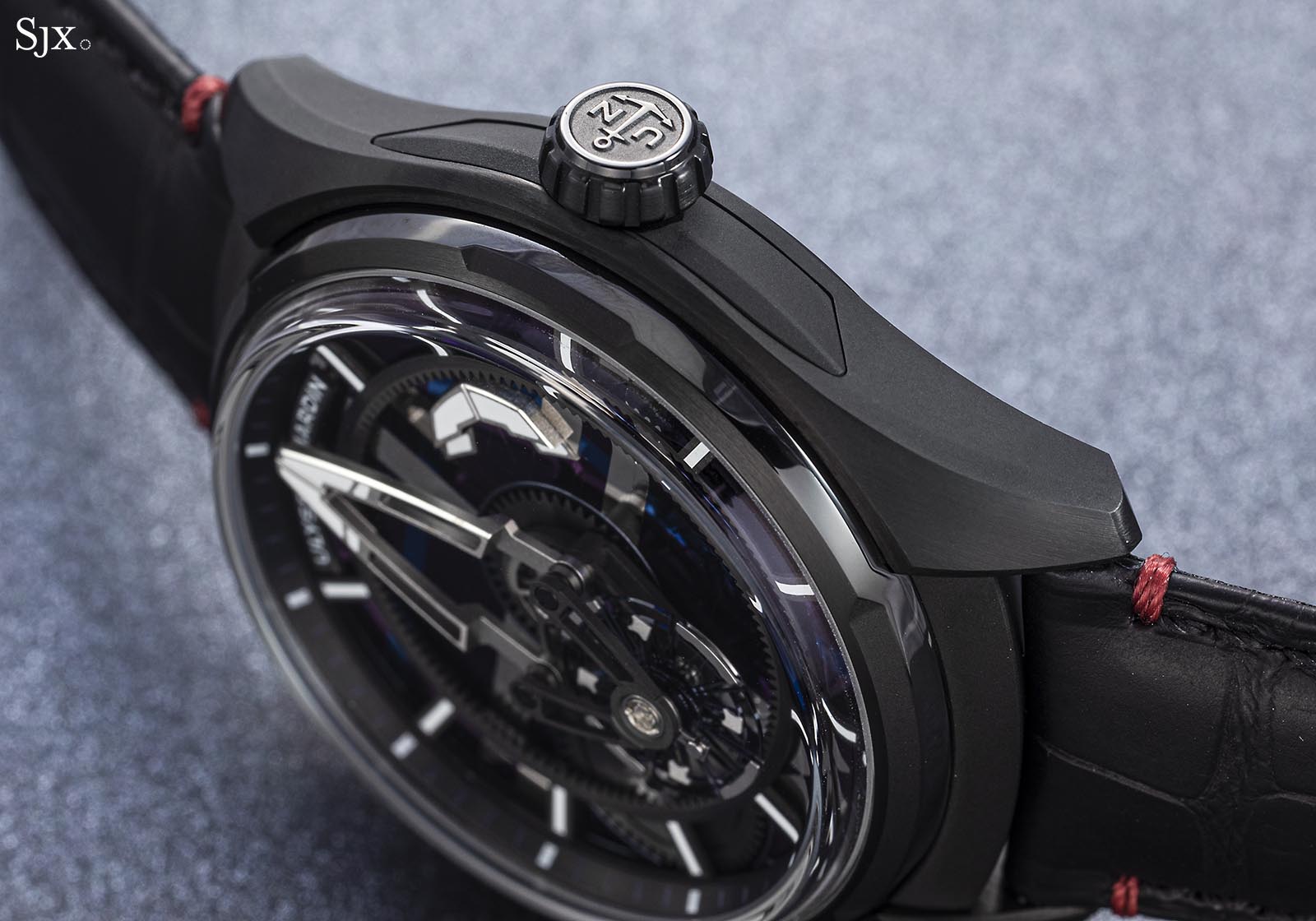
Black-coated case with a mix of brushed, polished and sandblasted surfaces
Turn the case over and the view through the sapphire case back is pretty conventional. Compared to the front, the back isn’t particularly interesting.
The rotor, bridges, and baseplate of the UN-230 are finished in black, with the distinctive “Magic Lever” automatic winding mechanism visible just beside the rotor’s axis. Because of the dark movement finish, the Magic Lever is the most prominent element of the entire movement.
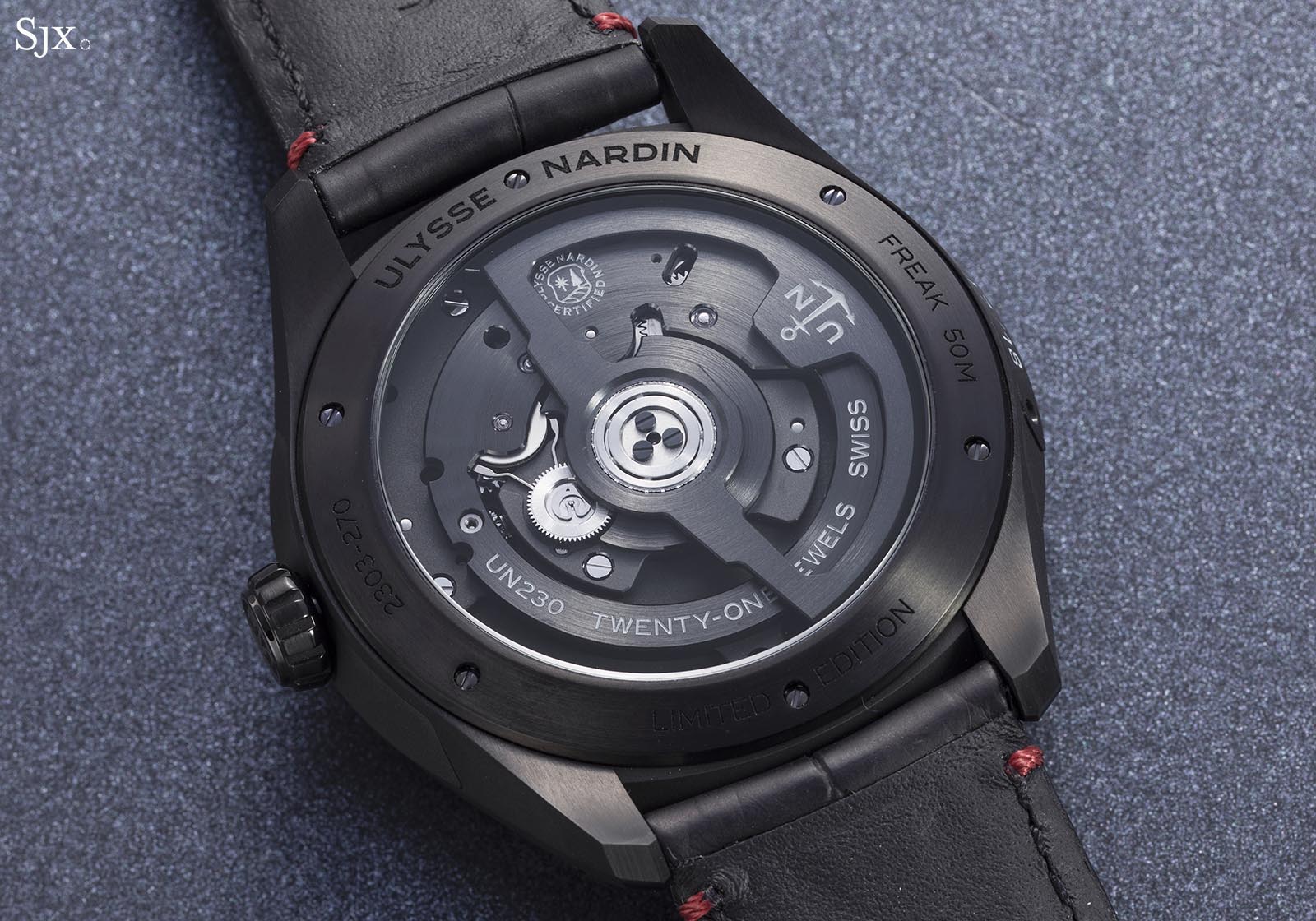
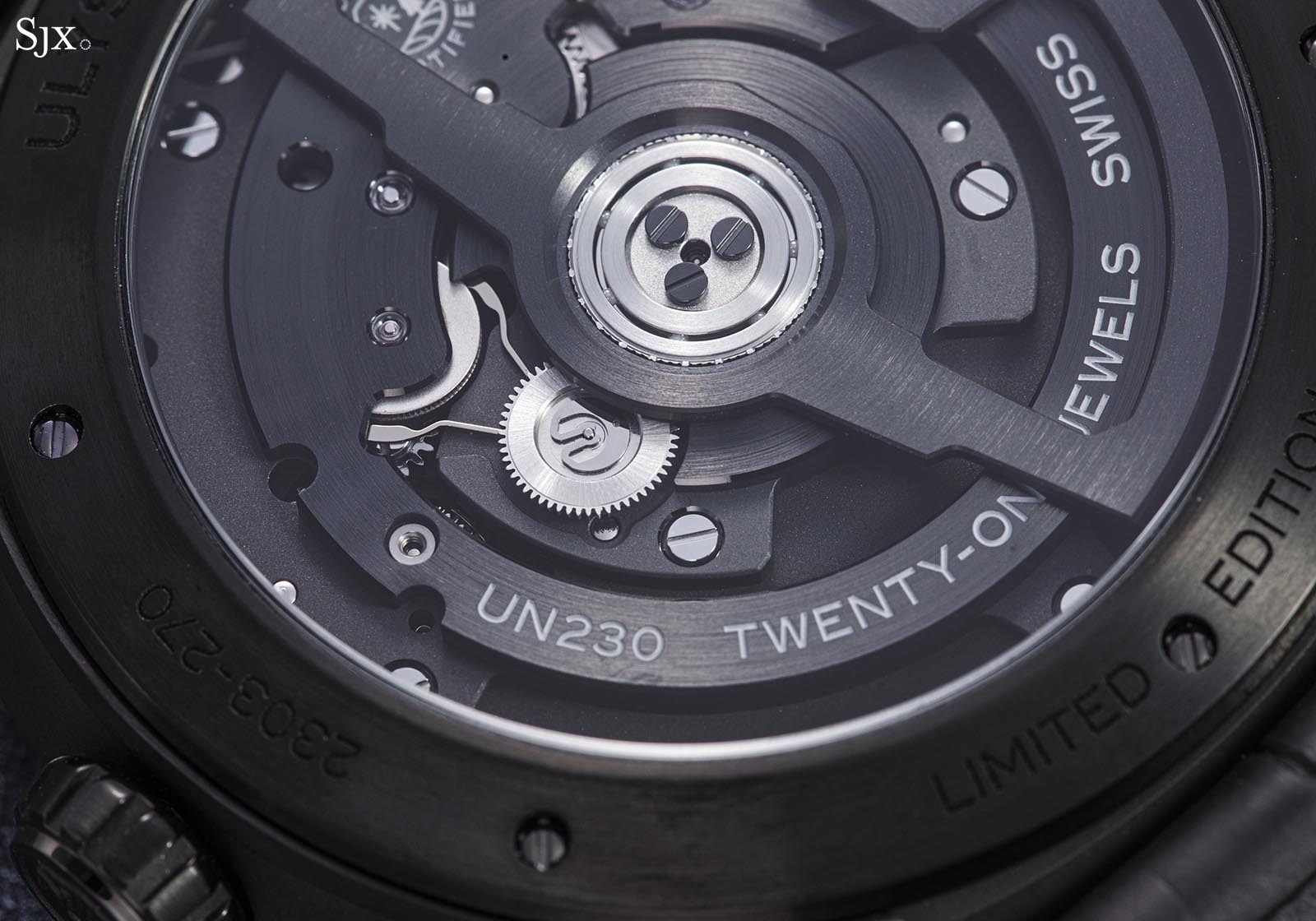
The “Magic Lever” with its characteristic V-shaped pawl, to the left of the rotor’s axis
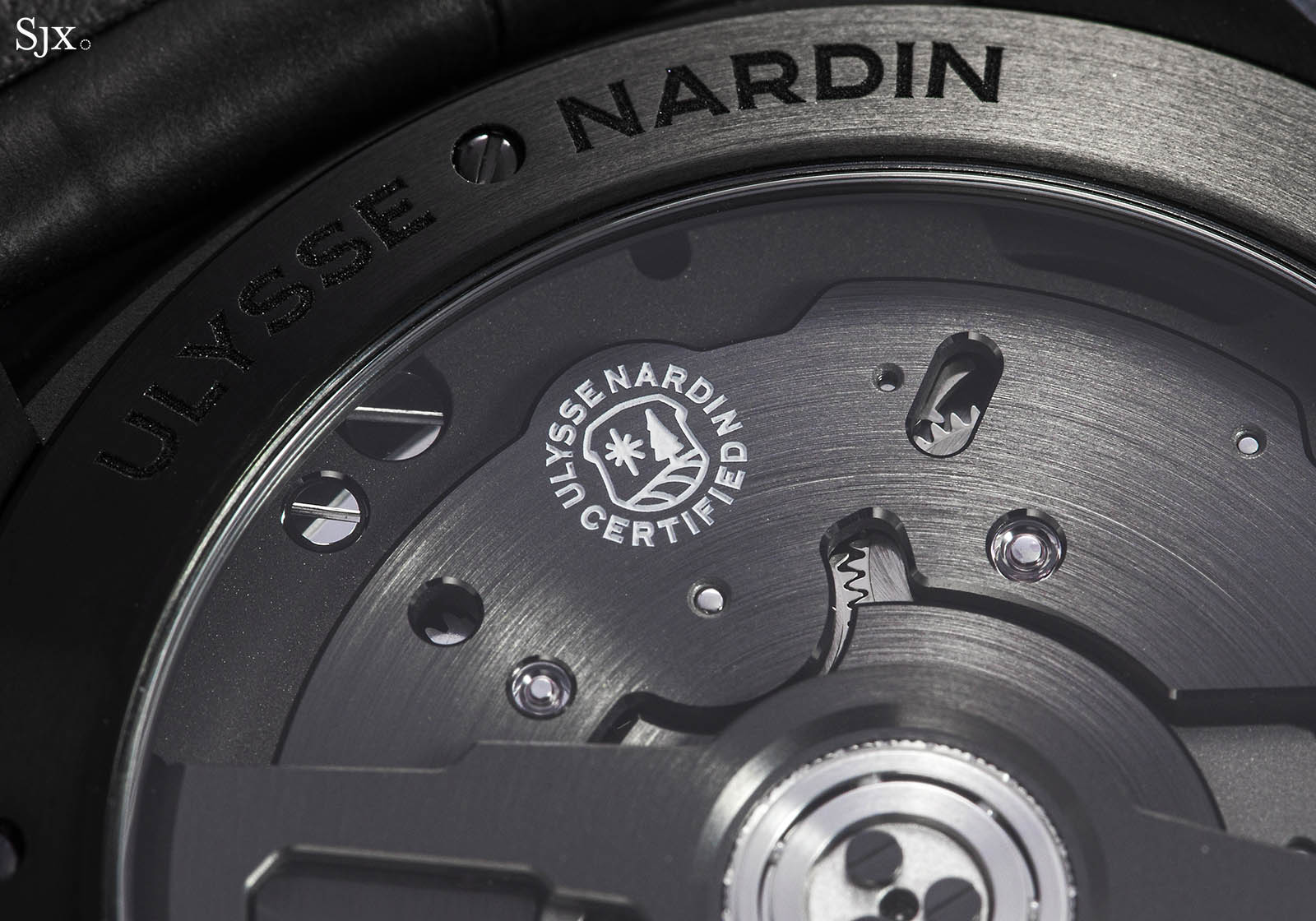
The base plate is frosted, while the bridges and rotor circular grained
Concluding thoughts
The Freak X Silicium Marquetry is a smartly-streamlined take on the original Freak that manages to offer the core accomplishments in a smaller case, and at a lower price. Though the streamlining means some features, like the double-wheel escapement, are dispensed with, the Freak X makes up for that with the technically-advanced balance wheel.
But that all also applies to the standard Freak X. The Silicium Marquetry edition is rounded out by a dial that uses an artisanal technique to apply a high-tech material, perhaps a self-reflective comeback at the soullessness of silicon technology in traditional watchmaking. And aptly enough, it’s being done by the brand that pioneered silicon in the first place.
At a bit under US$30,000, the Freak X Silicium Marquetry costs almost as much as the 18k gold version of the Freak X. It’s no longer a value proposition, but the dial and small edition size make it one of the most compelling versions of the watch.
Key facts and price
Ulysse Nardin Freak X Silicium Marquetry
Ref. 2303-270LE/BLACK-MARQ (DLC-coated)
Ref. 2303-270LE/03-MARQ
Diameter: 43 mm
Height: 13.35 mm
Material: Natural-finish or DLC-coated titanium
Water resistance: 50 m
Movement: Cal. UN-230
Functions: Hours and minutes
Winding: Automatic
Frequency: 21,600 beats per hour (3Hz)
Power reserve: 72 hours
Strap: Alligator leather
Limited edition: 18 pieces each
Availability: Already at boutiques and retailers
Price: US$29,500
Back to top.

